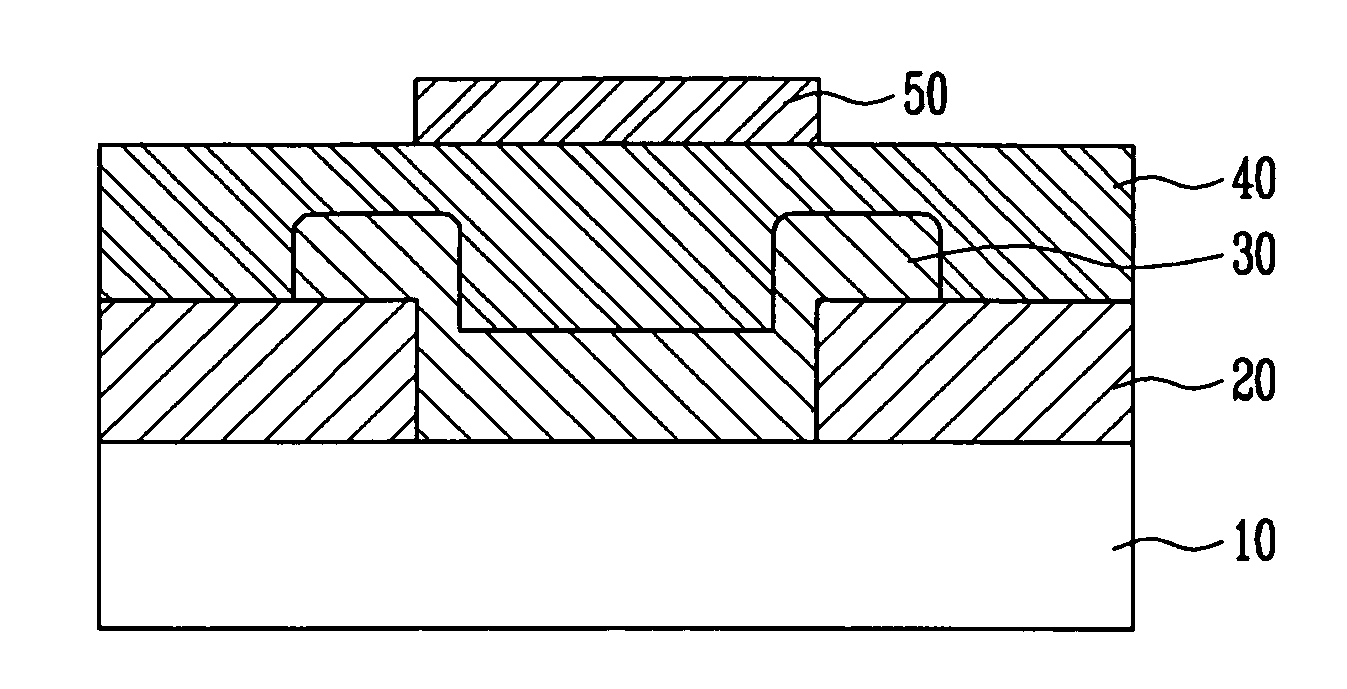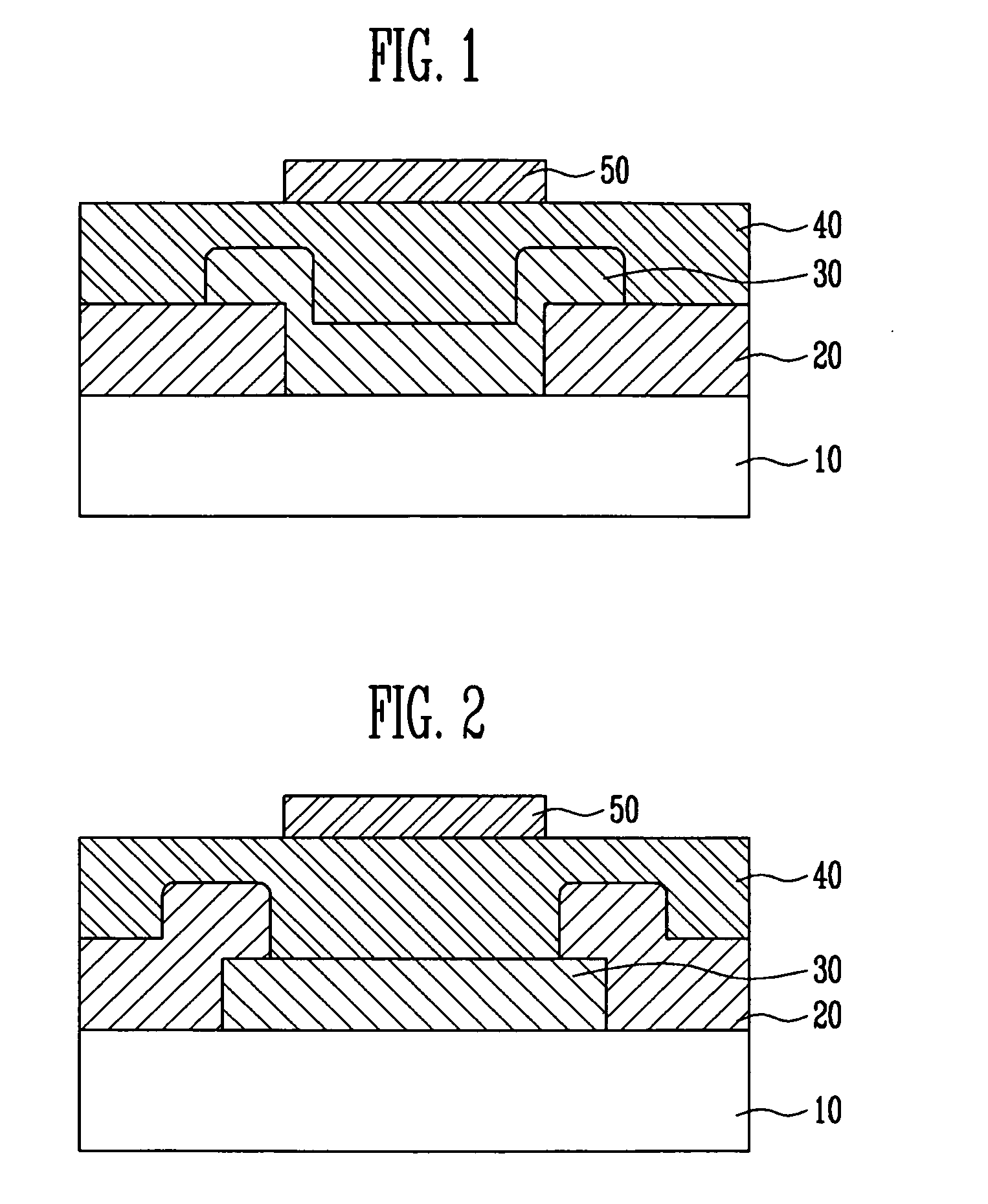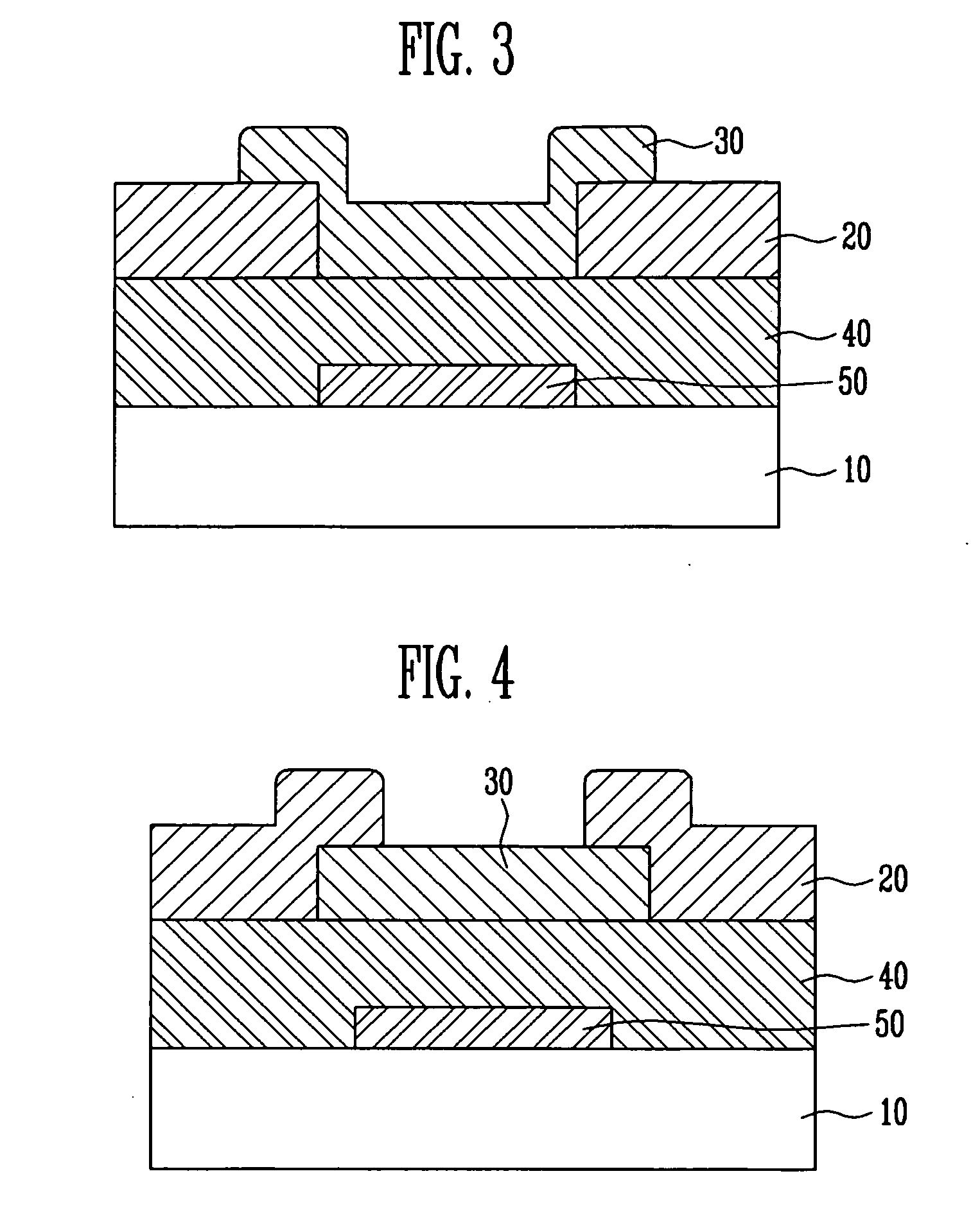Method of fabricating zto thin film, thin film transistor employing the same, and method of fabricating thin film transistor
- Summary
- Abstract
- Description
- Claims
- Application Information
AI Technical Summary
Benefits of technology
Problems solved by technology
Method used
Image
Examples
experimental example
[0077]Zinc Oxide to Tin Oxide Composition Ratio and Analysis of Crystal Properties
[0078]As illustrated in FIG. 6, a zinc-tin-oxide(ZTO) thin film was formed by simultaneously depositing zinc oxide and tin oxide on a stationary substrate at a temperature of 200° C. using a zinc oxide target and a tin oxide target that are mounted on a sputter. Subsequently, the area of the substrate was divided at a regular interval and the composition of the thin film and crystal properties in each region were analyzed. The composition of the thin film was analyzed by AES and the results are illustrated in FIG. 7. Further, the crystal properties in each region were analyzed by XRD and the results are illustrated in FIG. 8.
[0079]According to FIGS. 7 and 8, it can be confirmed that an amorphous ZTO thin film was obtained within a zinc-to-tin atomic ratio of 4:1 to 2:1.
[0080]Evaluation of Amorphous Properties of ZTO Thin Film Depending on Temperature
[0081]As illustrated in FIG. 6, a zinc-tin-oxide(ZTO)...
example 1
[0085]Source and drain electrodes were deposited to a thickness of 150 nm on a substrate by sputtering using ITO and then patterned by etching at a temperature of 50° C. using a mixture of phosphoric acid and nitric acid. Afterwards, zinc oxide and tin oxide were deposited on the source and drain electrodes by sputtering at room temperature so that the zinc-to-tin atomic ratio was 3:1, thereby forming a ZTO channel layer to a thickness of 20 nm. Then, the resulting structure was annealed at a temperature of 300° C. for one hour. Subsequently, the channel layer was patterned by dry etching using Cl2. Then, alumina was deposited on the channel layer at a temperature of 150° C. by ALD method so that a gate insulating layer with a thickness of 190 nm was formed. Subsequently, the gate insulating layer was annealed at a temperature of 300° C. for one hour and patterned by etching using a phosphoric acid solution heated up to a temperature of 120° C. A gate electrode was deposited to a th...
example 2
[0086]A thin film transistor was fabricated in the same manner as Example 1 except that a deposition temperature was 200° C. when the channel layer was formed. Characteristics of the obtained transistor were evaluated and the results are illustrated in FIG. 13. As can be confirmed from FIG. 13, SS was equal to 0.67 and mobility was 5.08.
[0087]Examples 1 and 2 show that although a ZTO channel layer was deposited at a low temperature such as room temperature or 200° C., its characteristics remained intact.
PUM
 Login to View More
Login to View More Abstract
Description
Claims
Application Information
 Login to View More
Login to View More - R&D
- Intellectual Property
- Life Sciences
- Materials
- Tech Scout
- Unparalleled Data Quality
- Higher Quality Content
- 60% Fewer Hallucinations
Browse by: Latest US Patents, China's latest patents, Technical Efficacy Thesaurus, Application Domain, Technology Topic, Popular Technical Reports.
© 2025 PatSnap. All rights reserved.Legal|Privacy policy|Modern Slavery Act Transparency Statement|Sitemap|About US| Contact US: help@patsnap.com



